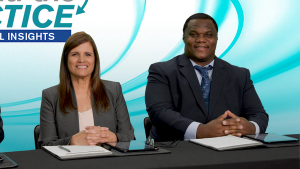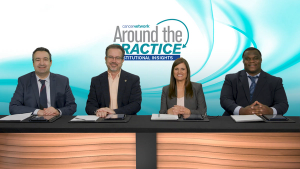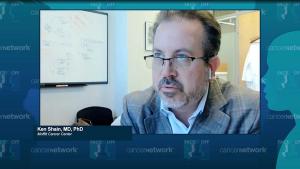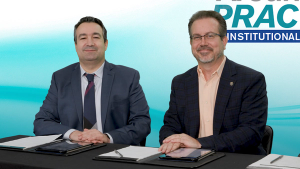Articles by Ken Shain, MD, PhD
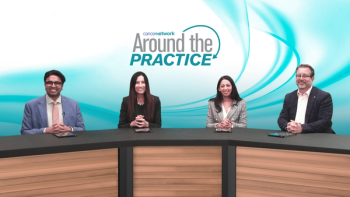
Panelists discuss how the treatment landscape for patients with transplant-ineligible/deferred newly diagnosed multiple myeloma (NDMM) is expected to evolve, with considerations for optimizing therapeutic approaches based on emerging data from novel drug combinations and treatment strategies.

Panelists discuss how frailty assessment influences treatment decisions in patients with transplant-ineligible newly diagnosed multiple myeloma (NDMM), particularly examining the IFM2017-03 study’s evaluation of a dexamethasone-sparing approach using daratumumab plus lenalidomide in frail patients.

Panelists discuss how isatuximab- and daratumumab-based quadruplet regimens compare in patients with transplant-ineligible/deferred newly diagnosed multiple myeloma (NDMM), with a particular focus on minimal residual disease (MRD) negativity data from the IMROZ and CEPHEUS trials, presented at the 2024 American Society of Hematology (ASH) Annual Meeting and Exposition.

Panelists discuss how treatment strategies and sequencing decisions for patients with multiple myeloma who decline transplantation despite eligibility must be carefully tailored, considering both immediate therapeutic goals and potential future treatment options.

Panelists discuss how the CEPHEUS study comparing subcutaneous daratumumab plus VRd vs VRd alone in patients with transplant-ineligible newly diagnosed multiple myeloma (NDMM) provides important insights into the role of quadruplet therapy in this specific population.

Panelists discuss how the evolving treatment landscape for patients with transplant-eligible newly diagnosed multiple myeloma (NDMM) is being shaped by emerging data on optimal treatment sequencing strategies, both in frontline settings and subsequent lines of therapy.

Panelists discuss how recent findings from the GMMG-HD7 trial comparing isatuximab-RVd vs RVd have shaped treatment decision-making in patients with multiple myeloma by providing comparative efficacy and safety data between the 2 regimens.

Panelists discuss how the choice between isatuximab-based quadruplet and daratumumab-based regimens in multiple myeloma treatment depends on clinical trial data comparing Isa-KRd vs KRd, with particular emphasis on efficacy outcomes and patient-specific factors that might influence treatment selection.

Panelists discuss how the AURIGA trial demonstrates superior outcomes with daratumumab plus lenalidomide maintenance compared with lenalidomide alone after autologous stem cell transplantation (ASCT) in newly diagnosed multiple myeloma while examining key subgroup analyses that inform treatment decisions regarding posttransplant maintenance therapy selection.

Panelists discuss how while daratumumab-based quadruplet regimens are increasingly becoming the standard of care for patients with transplant-eligible newly diagnosed multiple myeloma (TE NDMM) due to superior efficacy data, certain factors like frailty, comorbidities, and cost considerations may still warrant triplet therapy in select cases.

Panelists discuss how recent pivotal trials like PERSEUS and CASSIOPEIA demonstrate superior outcomes with daratumumab-based quadruplet and triplet combinations compared with standard regimens in transplant-eligible newly diagnosed multiple myeloma patients, particularly showing improved progression-free survival when daratumumab is added to VRd (bortezomib, lenalidomide, and dexamethasone) or VTd (bortezomib, thalidomide, and dexamethasone) backbones.

Panelists discuss how the treatment paradigm for newly diagnosed multiple myeloma (NDMM) has evolved from conventional chemotherapy to modern regimens incorporating novel agents like proteasome inhibitors, immunomodulatory drugs, and monoclonal antibodies while highlighting persistent challenges including optimizing treatment sequencing and addressing high-risk disease.
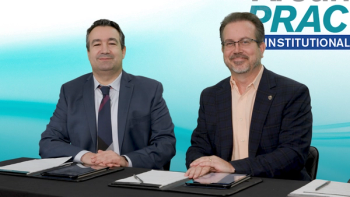
Closing out their discussion on the management of multiple myeloma, experts from the Moffit Cancer Center highlight key unmet needs and future directions in care.
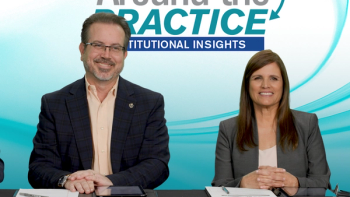
Centering discussion on a patient scenario of multiply relapsed multiple myeloma, panelists consider use of CAR T-cell therapy or bispecifics in this setting.
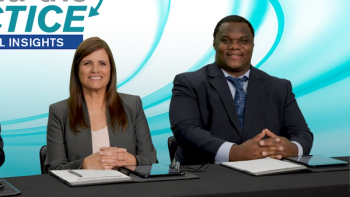
Shared insight on the development of CAR T-cell therapies and their use in the later-line setting for patients with multiply relapsed multiple myeloma.
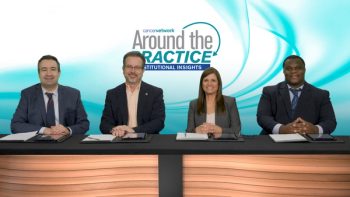
Expert perspectives on the combination of novel bispecific therapies and where they may fit into the treatment paradigm of relapsed/refractory multiple myeloma.
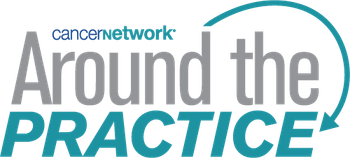
Current standard of care options in transplant-eligible, newly diagnosed multiple myeloma have been outlined in groundbreaking trials, of which a group of experts convened to discuss the best treatment options.

A brief review of talquetamab, a novel agent in the setting of relapsed/refractory multiple myeloma that targets GPRC5D.

Following their discussion on teclistamab, experts from the Moffit Cancer Center highlight other BCMA-targeted therapies available in the relapsed/refractory setting of multiple myeloma.

Panelists review data from the MajesTEC-1 clinical trial and elucidate the role of teclistamab therapy in patients with relapsed/refractory multiple myeloma.

Shared insight on the value of using effective regimens upfront and optimal sequencing throughout several lines of therapy in multiple myeloma.

Switching their focus to the relapsed/refractory setting, experts from the Moffit Cancer Center consider second-line treatment options for patients with multiple myeloma.

Expert perspectives on a patient profile of transplant-ineligible multiple myeloma, with considerations for treatment selection and defining transplant ineligibility.

Shared perspectives on the role of continued therapy in patients with transplant-ineligible newly diagnosed multiple myeloma in light of clinical data and dose adjustment strategies.

Experts from the Moffit Cancer Center work to identify frail patients with transplant-ineligible NDMM and consider how best to select first-line therapy for this population.

Moving on to review the management of transplant-ineligible NDMM, expert panelists highlight first-line treatment options with data from the SWOG0777 and MAIA studies.

Centering focus on a patient scenario of transplant-eligible newly diagnosed multiple myeloma, panelists consider the role of induction therapy and transplant in this setting.

Shared insight from experts in multiple myeloma on the real-world utilization of induction therapy and transplant for patients with newly diagnosed disease.

Experts from the Moffit Cancer Center share insight on induction therapy strategies and optimization for patients with transplant-eligible newly diagnosed multiple myeloma.
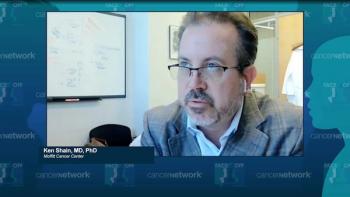
Ken Shain, MD, PhD, pinpoints the critical, lingering gaps in patient access to cellular immunotherapies in multiple myeloma.









